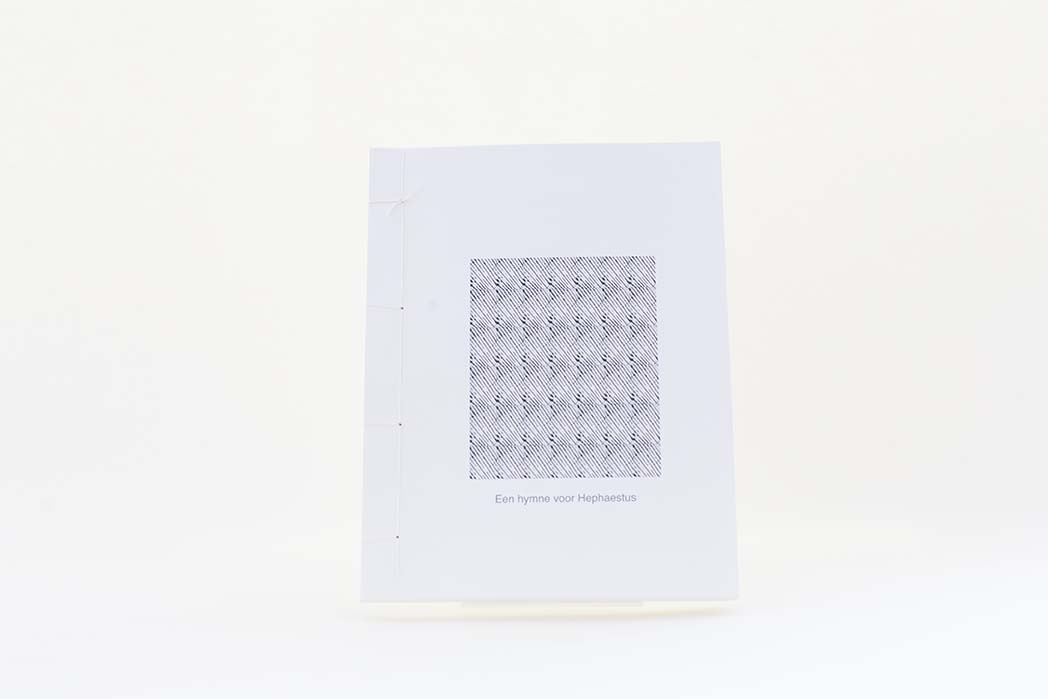
A handmade book with handmade paper samples
Size: 24 x 33,5 cm
Edition: 15
Publication date: September 2022
Price: €80
At the book fair of the photography festival Unseen, there was once a Japanese publisher who made a book on the spot. It was a whirlwind show, with printing, binding, and cutting happening rapidly. I wasn’t particularly interested in the content of the book, but the paper fascinated me. The book was printed on the most commonly used Japanese copy paper: A4, light gray in color, recycled. I was given a few sheets to take home. What made this paper so fascinating was the sound it made when you waved a sheet of it. The stiffness and thickness combined with the material it’s made from created its tone color. It became clear to me then: the most beautiful paper comes from Japan. And from Paris too. Because at 3 Quai Voltaire, there’s a shop that sells art supplies. In Paris since 1887. The top floor is a paradise for paper enthusiasts who love Japanese paper.
Crackle, creak, rustle and reverberate, are words that can describe the sound of paper.
Paper bags, sheets of paper wrapping around French baguettes, and tissue paper all make crisp sounds. The paper on which this book is printed echoes and with some imagination, rustles out of my printer.
The most beautiful paper comes from Japan. I wanted to know how it’s made. So I bought kozo (mulberry bark), gampi (a shrub), and matsumata (a herb). These are barks from Japanese plants that need to be cooked with potassium carbonate. I also bought a stick to beat the cooked fibers and a binder: polyethylene oxide. In Japan, they use neri, the slime from hibiscus roots, and turn their noses up at the synthetic version. And a sieve too. The Japanese sieve wasn’t available, so I got a European model. A beautiful one: handmade from ash wood with a bronze frame and brass band.
For the Japanese fibers, cooking them for too long has a negative impact on the stiffness and sound of the paper. I had to be careful. The entire process from bark to wet paper took exactly three days in the European way. In Japan, they spend weeks if not months on it. After cooking, they leave the fibers in a cold stream for days to rinse and then bleach them in the sun.
To test my self-taught skills, I attended a workshop by a Japanese papermaker. What I saw there was something I would never achieve. Years of perseverance ensured that each sheet had the same thickness, stiffness, and sound. Almost industrially made but with just a little more soul.
In addition to Japanese fibers, there are also other types of fibers available such as flax, hemp, and abaca (banana plant). I wanted to try those too. The fibers come in large pressed sheets and are much easier to work with than their Japanese counterparts. I also had a bunch of brown shopping bags lying around which I used as material too. My goal was to create paper as thin as possible. I experimented with binders, fillers, and starches in search of the perfect paper and sound. And finally, I experimented with dyes and ink.
My most beautiful paper has the lowest score on the stiffness index. It’s soft, limp, white, resembling lace. It rustles and is made from abaca fiber (banana plant). It’s one of the first papers I made. If I make abaca now, it turns out soft, limp, white but not quite as thin as before. It rustles but doesn’t resemble lace. I can no longer reproduce those first sheets.
For a book, my paper is unsuitable. It cannot tolerate random images and texts. The paper has its own distinct language. Images that don’t add any meaning to it are immediately punished on this paper. The image turns into kitsch.